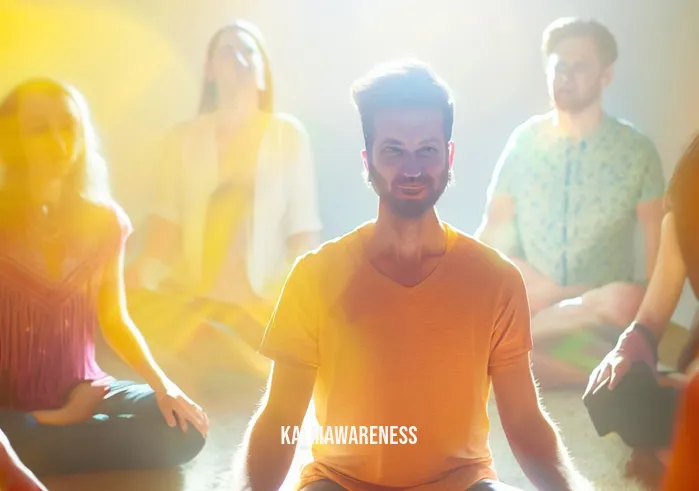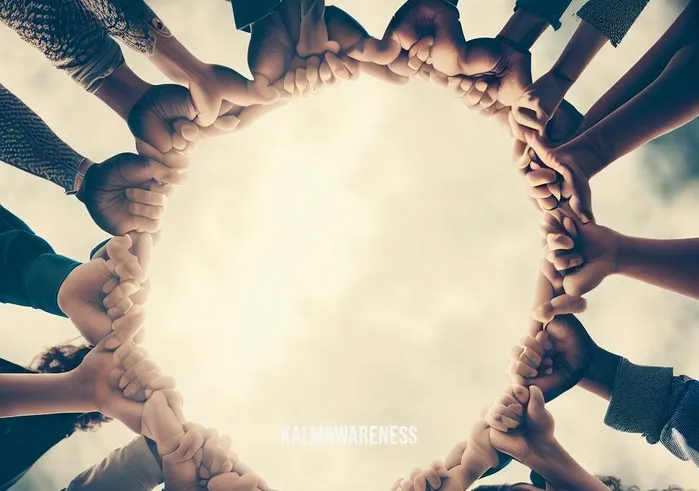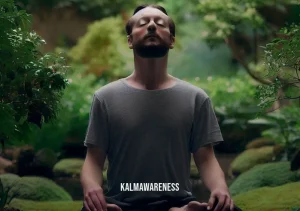Letting Go of Fear Meditation: The Mindful Path to Emotional Healing
In today’s fast-paced world, where stress, anxiety, and apprehensions often define our lives, the practice of mindfulness stands out as a beacon of hope. It’s not just about finding a moment of calm in the chaos but transforming our relationship with our innermost fears and anxieties. Central to this transformation is the concept of letting go of fear meditation. This form of meditation, deeply rooted in the principles of mindfulness, emotional healing, relaxation, and self-improvement, has proven to be a game-changer for many seeking respite from the burdens of anxiety.
The Power of Mindfulness in Facing Fear
Mindfulness is more than just a buzzword. At its core, mindfulness is about being happy now, embracing the present moment without judgment. It involves a deliberate act of focusing one’s attention on the present, without letting it drift into anxieties about the past or the future. This approach, when merged with targeted meditation practices, empowers individuals to confront and ultimately let go of their fears.
One might wonder how simply being present can combat something as potent as fear. The answer lies in understanding the nature of fear itself. Often, our fears are projections of past traumas or future uncertainties. By anchoring ourselves in the present, we prevent these projections from overwhelming our psyche. In essence, mindfulness involves attaining a peaceful state of mind in which thoughts are not occupied by worry.
Breath: The Anchor of Meditation
Central to the practice of letting go of fear meditation is the act of breathing. Breathing is an element of some meditation exercises that acts as an anchor, a constant that one can return to when overwhelmed by distressing thoughts or emotions. It’s no surprise that many meditation techniques, whether they focus on relaxation, emotional healing, or other facets of self-improvement, emphasize the importance of breath.
This emphasis on breathing is not just about the physical act. It’s about understanding its power to stabilize our thoughts. When we’re anxious or afraid, our breathing often becomes shallow. By consciously focusing on deep, rhythmic breaths, we can stabilize our emotional state, setting the stage for deeper introspection.
The Journey Towards Emotional Healing
Emotional healing is a journey, not a destination. As with any journey, it’s vital to have the right tools and strategies in place. While there are many paths one can take in the pursuit of emotional well-being, the practice of letting go of fear meditation offers a holistic approach.
It’s a practice that encourages individuals to face their fears head-on. Instead of shying away from or suppressing negative emotions, one learns to acknowledge them without judgment. This acknowledgement is the first step towards healing. Techniques such as EMDR meditation further complement this process by providing targeted strategies to address and process traumatic memories.
The Role of Relaxation in Overcoming Fear
Relaxation is not just about physical ease but also mental clarity. When our mind is cluttered with fears and anxieties, it becomes challenging to make decisions or even enjoy the simple pleasures of life. This is where practices like mindful movement for sleep and mindful hypnobirthing come into play. These techniques, rooted in the principles of mindfulness and relaxation, offer tangible strategies to declutter the mind and cultivate a sense of peace.
Conclusion and What Lies Ahead
As we embark on this exploration of letting go of fear meditation, it’s essential to remember that every individual’s journey is unique. What works for one might not work for another. The key lies in persistence, patience, and the willingness to face one’s fears with an open heart. In the next segment, we’ll delve deeper into the techniques and strategies that can aid in this transformative journey, including the role of sustainable self-care, the significance of walking meditations for teenagers, and insights from experts like Jack Kornfield.
To truly understand the transformative power of letting go of fear meditation, one must immerse oneself in the practice, experimenting with different techniques to find what resonates most. So, continue reading as we take this journey together, exploring the myriad ways in which mindfulness can empower us to live our best lives, free from the shackles of fear.
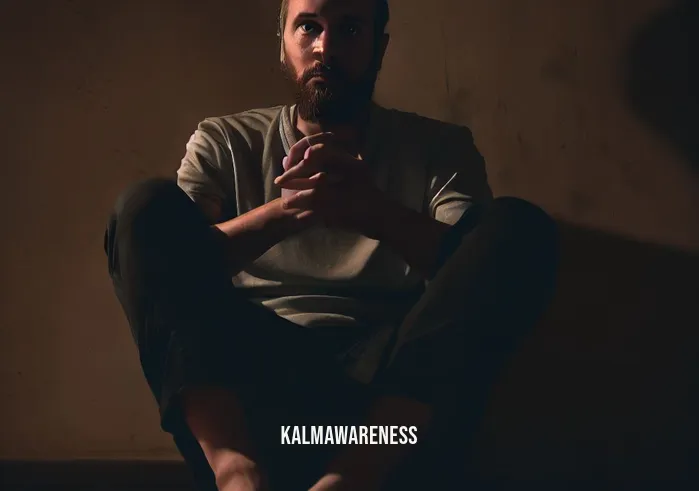
Expanding the Horizons of Letting Go of Fear Meditation
Meditation, in its many forms, offers a sanctuary from the tumult of everyday life. Specifically, the practice of letting go of fear meditation has proven pivotal in helping individuals combat anxieties, traumas, and phobias. As we dive deeper into the nuances of this meditative practice, it’s essential to understand the different techniques, variations, and its broader applications in daily life.
Techniques That Aid in Releasing Fear
When it comes to releasing fear, there isn’t a one-size-fits-all approach. Different techniques cater to individual preferences, creating a personalized experience. Here are some strategies you can incorporate:
Touch-Based Techniques: Meditation practices like touch that body part can be powerful tools. By focusing on different parts of the body, one can ground themselves, redirecting their attention away from anxiety-inducing thoughts.
Yogic Practices: Yoga is intrinsically linked to meditation. Techniques such as rouse yoga can help align the body and mind, creating a conducive environment for meditative practices.
Audio-Enhanced Meditation: Sounds can profoundly influence our mental state. Using 256 Hz benefits during meditation can promote relaxation, making it easier to confront and release fears.
Daily Reflection: Meditation doesn’t always mean sitting in silence. Reflecting on daily practices like one for each blessed day allows for consistent self-awareness and growth.
Factors Influencing the Success of Fear-Releasing Meditation
Letting go of fear isn’t just about the techniques you use. Various external and internal factors can play a pivotal role in determining the success of your meditative journey:
| Factor | Description | Tips for Enhancement |
|---|---|---|
| Environment | A serene environment can greatly enhance your meditation experience. | Choose quiet, dimly lit spaces. Use scented candles or essential oils. |
| Consistency | The benefits of meditation magnify with regular practice. | Set aside a specific time daily. Start with shorter sessions and gradually increase. |
| Guidance | For beginners, having a guide can simplify the process. | Opt for meditation classes, or explore resources like Jack Kornfield meditation for beginners. |
| Mindset | Entering meditation with an open mind enhances receptivity to its benefits. | Set intentions before each session. Remember, it’s a journey, not a destination. |
| Personalized Techniques | Adapting techniques to one’s comfort can make the experience more profound. | Explore different methods, and don’t hesitate to modify them as per your needs. |
The Role of Support and Continuous Learning
While self-practice is invaluable, having a support system can significantly enhance one’s meditation journey. Engaging in group meditations, joining forums, or simply discussing experiences with friends can offer fresh perspectives. Continuous learning is also pivotal. As meditation practices evolve, it’s crucial to stay updated. Delving into resources like meditation made simple can offer insights into the latest techniques and trends.
The Future: Advancing with Fearless Intention
Embracing the path of letting go of fear meditation is a commitment to oneself. As we understand its deeper layers, nuances, and techniques, the journey becomes more enriching. This practice is more than just about confronting fear; it’s about reclaiming control, finding inner peace, and manifesting a life free from the constraints of debilitating anxieties.
In the next chapter, we’ll explore the transformative stories of individuals who’ve incorporated letting go of fear meditation into their lives. Their journeys, challenges, and triumphs offer real-world insights into the profound impact this practice can have. So, continue reading to immerse yourself in tales of transformation, resilience, and hope.
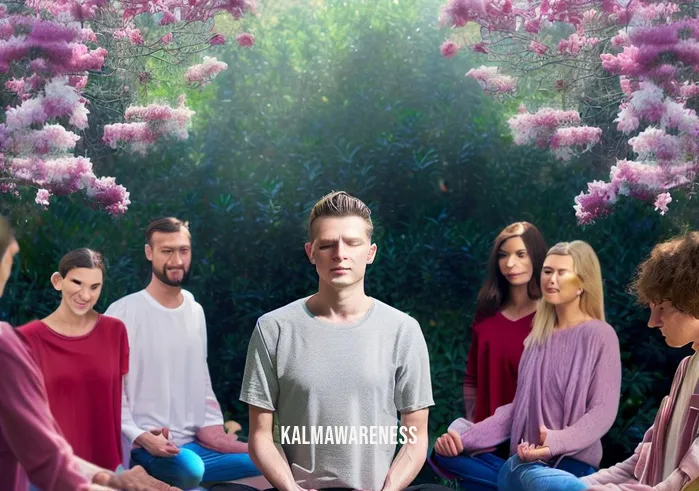
Tales of Transformation: Hope through Letting Go of Fear Meditation
Amidst the countless meditation practices and techniques available to us, the act of letting go of fear stands out for its transformative power. Each journey into this practice is a testament to the resilience of the human spirit, a beacon of hope for many seeking solace. In this chapter, we’ll immerse ourselves in the real-life stories of individuals who’ve harnessed the power of letting go of fear meditation, finding inspiration in their tales of transformation.
Sarah: Rediscovering the Joy of Movement
Sarah, an avid dancer, found her world turned upside down after a severe car accident left her with chronic pain. The trauma not only impacted her physically but also instilled a deep-rooted fear of movement. It was during a session of mindful movement sleep meditation that Sarah began her journey of recovery. She says:
“In the stillness of meditation, I found the courage to move again. It wasn’t about perfect steps but about reclaiming my narrative.”
Alex: Overcoming the Fear of the Unknown
Being laid off from a job he held for over a decade, Alex grappled with fear and anxiety about the future. The uncertainty was stifling until he discovered the judgement of the wise meditation technique. This practice taught him the power of acceptance and the importance of living in the present. Alex reflects:
“Fear of the unknown held me captive, but meditation taught me that sometimes, not knowing is the greatest adventure of all.”
Maya: Breaking Free from Past Trauma
Haunted by past traumas, Maya often found herself trapped in cycles of anxiety and despair. That’s when she stumbled upon the practice of EMDR meditation. With its targeted approach to processing traumatic memories, Maya began to see the world in a new light. She passionately shares:
“We can’t change our past, but we can alter our relationship with it. Letting go of fear meditation was my bridge to a brighter tomorrow.”
David: Embracing Sustainable Self-Care
For David, the pressures of daily life, both personal and professional, had culminated in a state of chronic stress. It was during a session focused on sustainable self-care that David realized the importance of prioritizing his well-being. With daily meditation, he started to let go of his fears and anxieties. He often remarks:
“Self-care isn’t selfish; it’s essential. Through meditation, I learned that by taking care of myself, I could better care for the world around me.”
The Ripple Effect of Letting Go
These tales, while unique in their experiences, share a common thread – the transformative power of letting go of fear meditation. It’s not just about releasing negative emotions but about embracing life with renewed vigor, hope, and optimism.
The stories also highlight the vast array of techniques within the realm of letting go of fear meditation. From movement-based practices to those focused on trauma recovery or sustainable self-care, there’s a technique tailored for every individual’s journey. The key lies in persistence, exploration, and the willingness to be vulnerable.
Journeying Forward: What Awaits Us
The narratives of Sarah, Alex, Maya, and David are just a few among countless tales of transformation. Their experiences remind us that, with the right tools and mindset, we can rewrite our stories, no matter how challenging the chapters may be.
As we progress in our exploration of letting go of fear meditation, in the next chapter, we’ll delve into the science behind this practice. How does meditation impact our brain? What physiological changes occur when we confront and release our fears? Dive deeper with us as we uncover the intricate interplay between the mind, body, and spirit in the transformative journey of letting go. Continue reading, and immerse yourself in the fascinating world of meditation’s healing prowess.
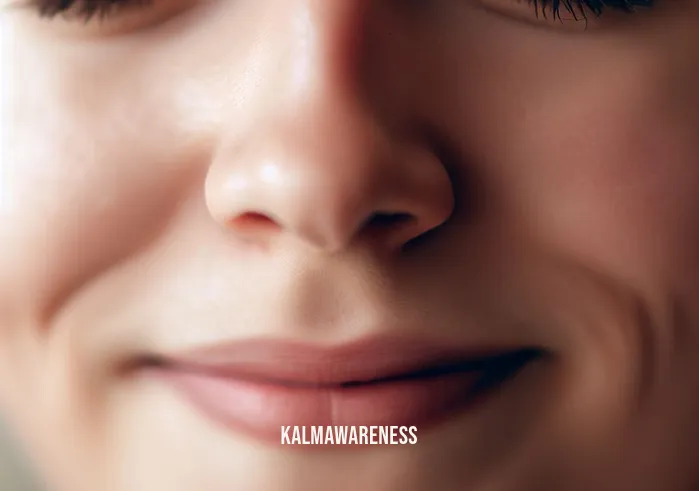
Decoding the Dynamics of Letting Go of Fear Meditation
As we journey deeper into the world of letting go of fear meditation, it becomes crucial to understand its intricacies. How does this practice help individuals confront their most profound fears? What are the steps and elements that make it so effective? In this chapter, we’ll demystify the practice, breaking it down into digestible segments that elucidate the transformative power of this meditation technique.
The Core Elements of Fear-Release Meditation
Intention Setting: Every session begins by setting a clear intention. It’s about acknowledging the fear and setting a purpose to navigate through it.
Focused Breathing: Central to most meditation practices, breathing acts as a bridge connecting the conscious and subconscious, calming the mind, and preparing it for introspection.
Visualization: Picturing oneself in a safe, serene space or visualizing the fear and consciously releasing it can have profound therapeutic effects.
Grounding Techniques: Whether it’s the touch that body part method or other sensory techniques, grounding anchors the individual in the present, providing stability.
Affirmations: Positive, empowering statements recited during the session reinforce self-belief and counter the negative narratives often associated with fear.
The Stages of Fear-Release Meditation
Preparation: This involves choosing a comfortable place, free from distractions. It’s also the phase where one decides on the techniques or methods they’ll use, based on their comfort and familiarity.
Centering: Here, individuals focus on their breathing, slowing it down, and entering a state of deep relaxation. This stage sets the tone for the rest of the session.
Confrontation: With a calm mind, individuals gently bring their fear into their conscious awareness, without any judgment.
Release: Leveraging visualization or affirmations, practitioners imagine the fear diminishing, releasing its grip over them.
Grounding and Closing: The session concludes by bringing attention back to the present moment, often by focusing on tactile sensations or the surroundings. A few deep breaths seal the meditation, and the individual emerges rejuvenated.
Benefits of This Transformative Practice
Enhanced Self-awareness: By confronting one’s fears, individuals become more attuned to their inner thoughts and emotions.
Reduced Stress Levels: Regular practice can significantly reduce stress, anxiety, and other negative emotions.
Improved Sleep Patterns: Many practitioners find better sleep quality and patterns after consistent practice, especially when complemented with techniques like mindful movement sleep.
Increased Emotional Resilience: Over time, individuals develop a more robust emotional response system, becoming less reactive to triggers.
Empowerment: Above all, this meditation fosters a sense of empowerment, giving individuals the tools to face, process, and move beyond their fears.
Maximizing the Experience
For those looking to further enrich their experience, integrating supplementary resources can be beneficial. For instance, understanding the judgement of the wise can help individuals process fears with a balanced perspective. Similarly, embracing principles of sustainable self-care ensures that one’s overall well-being complements the meditative journey.
Looking Forward: The Culmination of Our Journey
With a comprehensive understanding of the mechanics and marvels of letting go of fear meditation, we stand on the cusp of culmination. In our final chapter, we’ll synthesize all our learnings, drawing conclusions and offering a holistic view of this transformative practice. Dive in with us one last time as we wrap up our journey, making sense of the profound impact and potential of this meditative marvel. Continue reading, and let’s embrace the essence of fear-release meditation together.
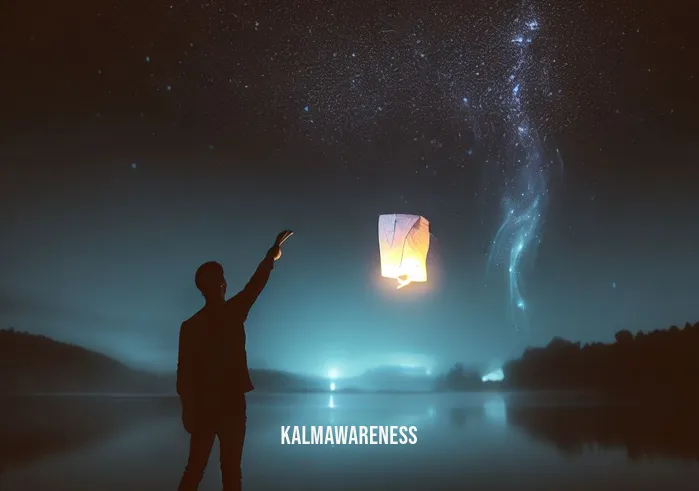
The Enlightened Path: Reflections on Letting Go of Fear Meditation
As we approach the end of our explorative journey into letting go of fear meditation, it’s an apt moment to pause, reflect, and treasure the wisdom we’ve amassed. The paths to emotional healing, self-awareness, and mindfulness are myriad, but few resonate as deeply and as universally as this transformative practice.
A Recap of Our Voyage
We began by understanding the essence of mindfulness and its profound impact on confronting and alleviating fears.
Through real-life tales, we witnessed the transformative power of meditation, drawing inspiration from individuals who reclaimed their narratives.
An in-depth dive allowed us to decode the dynamics of this practice, shedding light on its core elements, stages, and manifold benefits.
Throughout, resources like how we get deep so fast and insights from meditation made simple enriched our understanding, bridging theory and practice.
Applying Our Insights
Armed with this knowledge, the real journey begins now. It’s about:
Incorporating Meditation in Daily Routines: Make it a ritual, whether it’s a five-minute session every morning or an in-depth practice once a week.
Exploring More: Dive into other meditation practices. Perhaps start with understanding can u meditate lying down? to find a technique that aligns with your comfort.
Sharing with Others: Spread the word. Share the tools and techniques you’ve discovered with loved ones. After all, healing is more profound when shared.
Your Next Steps
Our journey through the realms of letting go of fear meditation is just one of many adventures you can undertake. Here’s what you can do next:
Revisit Previous Chapters: Sometimes, revisiting content with fresh eyes offers deeper insights. Explore our prior chapters to reinforce your understanding.
Explore More Content: Dive deeper into our vast repository of articles and resources on mindfulness, self-improvement, and emotional healing. Our piece on teenagers walking offers a fresh perspective on meditation and its benefits for younger individuals.
Join Our Community: Engage with fellow meditation enthusiasts, share experiences, and learn from others. There’s power in collective wisdom!
In Gratitude
Thank you, dear readers, for accompanying us on this enlightening voyage. Your time, attention, and intent to evolve are deeply cherished. As we part ways, remember that the path of mindfulness and letting go is an ongoing journey, not a destination. With every session, every moment of introspection, you’re taking strides toward a more peaceful, fearless self.
Until our next enlightening rendezvous, continue exploring, continue evolving, and remember: the journey within is the most profound adventure of all.
